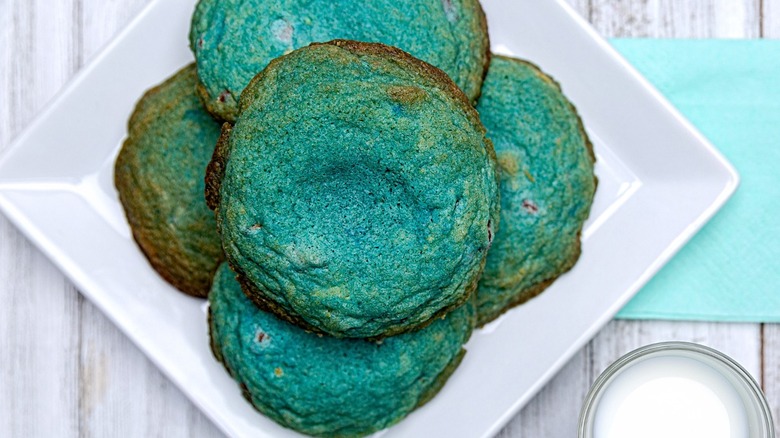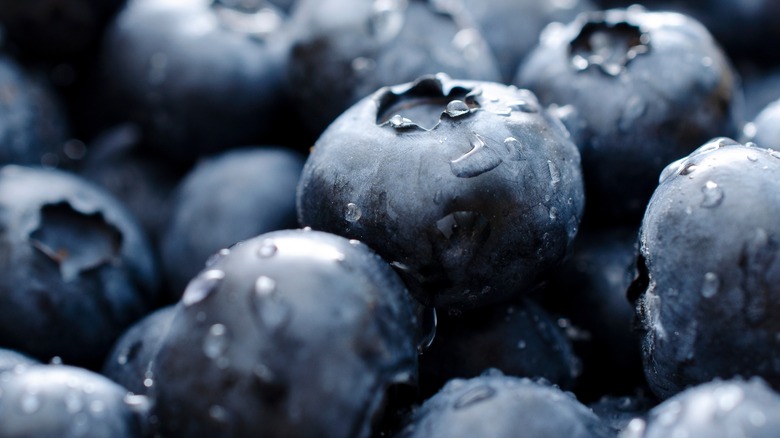How Blueberries Can Affect The Color Of Your Bakes
Have you ever heard the saying, "baking is a science?" This saying comes from the fact that baking, more so than cooking, involves the chemistry, biology and physics of mixing specific ingredients in just the right amounts to create chemical reactions while trapping gasses and using high temperatures. A "blue-ti-ful" example of this science is the power that blueberries can have in transforming the color of baked goods to either a neutral/natural blue, vibrant blue-green, or pink!
Blueberries have a naturally occurring compound known as anthocyanin, which is responsible for giving blueberries their rich blue color. This is also the case for other plant foods that are naturally purple or red such as eggplant, purple cabbage, strawberries and blackberries, blue corn, hibiscus, lavender — you get the idea. Anthocyanin is sensitive to pH levels, which is a measure of how acidic or alkaline a substance is. This is just like a 4th grade science class lesson, except so much more enticing because well, we're talking about blueberry baked goods here.
Nature's Fruit Formula
If you want a baked good that maintains the color of blueberries as we see them, like with this blueberry babka, it's best to avoid adding both baking soda and an acid (like lemon juice or vinegar) to a recipe and instead opt for just baking powder and a water-based liquid. This combination allows the pH level of the blueberry recipe to remain neutral, therefore not causing any affect on the blueberry color. Combining both baking soda and an acid will cause the blueberry batter or dough to turn pink or sometimes red or purple, depending. And finally, having just baking soda within the batter or dough of a blueberry baked good will raise the pH, causing it to become alkaline, thus yielding a vibrant blue-green color.
Experimenting with these different reactions in baked goods on purpose may even be advantageous actually. Perhaps you're interested in creating a baked good that's a vibrant blue-green or pink color but without the use of artificial food coloring, then creating these differing pH environments within your blueberry recipes could be a good alternative.
Additionally, if blueberries aren't your thing, keep in mind these types of pH level reactions can occur with any plant food containing anthocyanin, such as the ones previously mentioned above. Science class is now over and we can all go find that blueberry muffin we've been thinking about this whole time!

